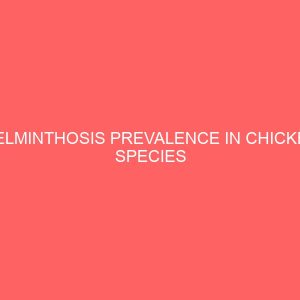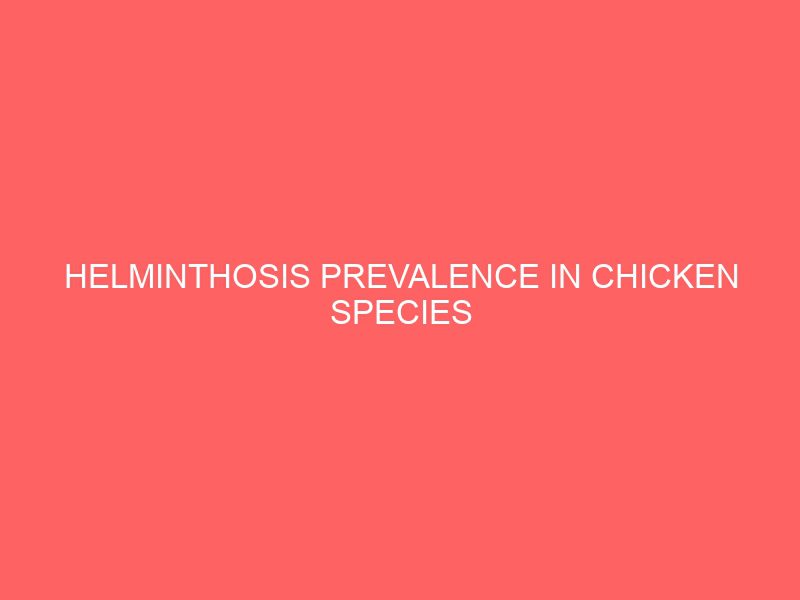Description
CHAPTER ONE
INTRODUCTION
Poultry farming in the world has gone through a lot of development in the past few years. It is now one of the most important and intensive branches of the livestock industry (Boersema, 1985). This is because the industrialization of poultry production is easier as compared to that of other livestock species. The total number of poultry in the world in 1996 was estimated to be 12.02 billion (Anon., 1996). However, only 954 million were found in Africa (Anon., 1992). This includes the domestic fowl (Gallus gallus), ducks (Carina moschata), geese (Anser anser) and turkeys (Meleagris galopavo).
In Nigeria the chicken population is estimated at 12 million (Anon., 1997). Over 50% are rural (free ranging) and kept traditionally for household consumption. These are left to scavenge for their food, are not given any feed supplementation and are housed at night to prevent thefts or losses from predators. The rest falls under semi-intensive management with partial feed supplementation, housed on earth floors and sometimes enclosed in a wire mesh and the commercial management systems where the chickens are completely housed in chicken houses, are exclusively fed commercial feeds and have disease prophylactic programmes carried out (Hameenda, 1996).
Boersema (1985) reported that despite the use of modem methods of poultry management, many domestic fowl are still kept under the free-range system and therefore likely to be infected with nematodes. This is true for most African countries including Nigeria. Under this production system, chickens have permanent contact with the soil and many insects and these harbour a wide range of nematode and cestode species especially during the rainy season (Pandey, Demey and Verhulst, 1992). Abebe, Asfaw, Genete, Kassa and Dorchies (1997) reported that parasites, both internal and external are common in the tropics where the standard of husbandry is poor and climatic conditions are favourable for their development. Graber (1973) and Gordon (1977) reported that intensive rearing once appropriately practised would exclude helminth parasites, especially those that require an intermediate host.
Shamul-Islam (1985) carried out a survey ofthe helminth fauna in domestic fowl in Nigeria and reported that out of 825 domestic fowl examined, 809 were infec:ted (98.1%). This included both nematodes and cestodes.
This poses a very significant problem, as poultry have become an important substitute for the relatively expensive beef in the diet of Nigerians (Chilonda, 1994). Despite the fact that beef production still ranks highest in the Nigerian livestock sector, the poultry industry is the fastest growing small scale animal production industry in Nigeria today (Chilonda, 1994). It is now the quickest source of additional income and one of the cheapest sources of animal protein supplementation.
There is however, a lack of knowledge on the helminths:, that are affecting poultry in the fast growing poultry industry in Nigeria. This study is therefore designed to provide more information on gastrointestinal nematodes in the different poultry production systems in Nigeria. Although the presence of cestodes has been reported (Shamul-Islam, 1985), they fall beyond the scope of this study. As nematodes constitute the most important group of helminth parasites in poultry (Ruff, 1991), the focus in the study is on the gastrointestinal nematodes.
1.3 STATEMENT OF OBJECTIVES
- To determine the prevalence of helminth species in commercial, semi-intensive and traditionally reared chickens.
- To study the effects of deworming on weight gain in the traditionally reared chickens.
- To evaluate the efficacy of piperazine, albendazole and levamisole against mixed helminth infections in poultry.








Reviews
There are no reviews yet.